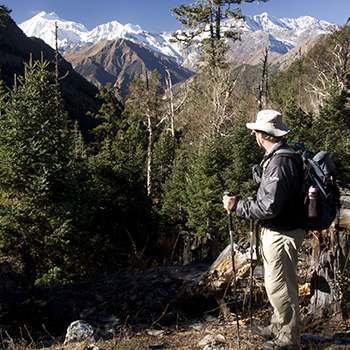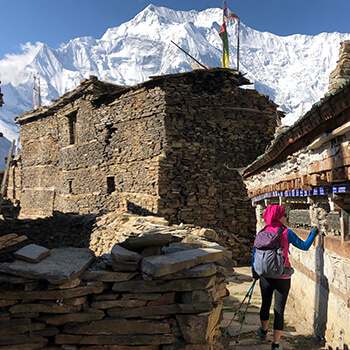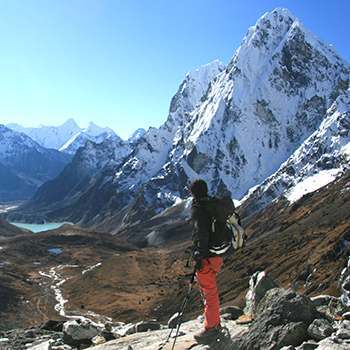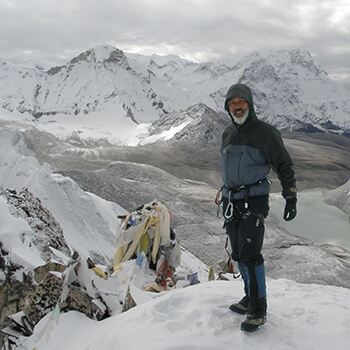Trek Duration and Grade
How far and how hard should you trek? Trek duration and grade are two of the most important questions you need to answer before planning a trekking holiday.
Trekking agents are often asked: ‘What is a good length of time to go trekking?’ or ‘There are treks from three days to treks that last months, is any one duration better than another?’ The simple answer is no. In fact, any amount of time that matches your vacation plans is a good amount of time. But there are some issues you should consider before trying to squeeze in as much as possible to your itinerary:
- TREK GRADE – How Hard is the Trek?
- FESTIVALS – Are there any events that you want to see, avoid or prepare for?
- WEATHER – How likely are delays due to weather?

The 3 Key Factors to Choosing Your Trek Duration and Grade
- Trekking grades (see Nepal Trekking Grades chart below) give you a good idea of whether you should allow for a little extra time, or speed things up along the trail. For example, the Everest Base Camp trek is normally a 12- to 15-day itinerary, but could be done in 10 days by pre-acclimatised or very fit folks. Or 20 days should you want to explore around each village along the trail. For the full GHT Nepal, if you run, the current Fastest Known Time is 37 days by Lizzy Hawker. But most trekkers take 120-140 days to complete the border to border traverse. GHT NW India is about 90 days, and GHT Bhutan is roughly 35 days but both can be much longer if you want to explore.
- Festivals (see Himalayan Festivals and Faiths) If your visit might coincide with a major festival either in the Kathmandu valley or out in the hills. So, you should try and extend your itinerary to give yourself time to enjoy the event. You may also need to leave some spare time in case of transport delays during festival periods.
- Weather buffer (see When to Trek) The mountains always have unpredictable weather and only in exceptional circumstances will you have perfect weather every day.
Flights to mountain airstrips are particularly susceptible to delays or cancellations. It is wise to add an extra day or two to your trip just in case you can’t make a connection.

Trekking Grades Explained
There is no ‘official’ trekking grade system in Nepal. The system used in this website is similar to that promoted by the Swiss Alpine Club and many countries around the world. However, due to the local demands of Himalayan trekking and the effects of altitude this system is slightly modified. We hope that it provides you with a clear idea of whether each trail is suitable for you.
There are five grades (see above), and every trek is rated according to the highest rating it receives across the grades. So, for example, if one criteria of a trek is Grade 3 when the others are Grade 2, it will receive a Grade 3 overall rating.
There are no Grade 1 treks described on this website, as it is designed for city and prepared trail walks of very short duration. Most of the city walks in the Kathmandu and Pokhara chapters are rated Grade 1.
See Go Trekking for details of the trek duration and grade for each route on this website as well as:
- Important information about planning and preparing for the trek
- Key highlights
- Ideal timing for when to go
- Accommodation options available
- Additional specific information is given in the trek summary box for each trek described in the route guide.
Now it’s time to also consider the many festivals …
Don’t be frustrated by being delayed for a few days because there’s no transport available. ‘It’s the festival’ is a regular excuse across the Himalaya! And if you have any questions about Trekking Grades please feel free to Get in Touch.













